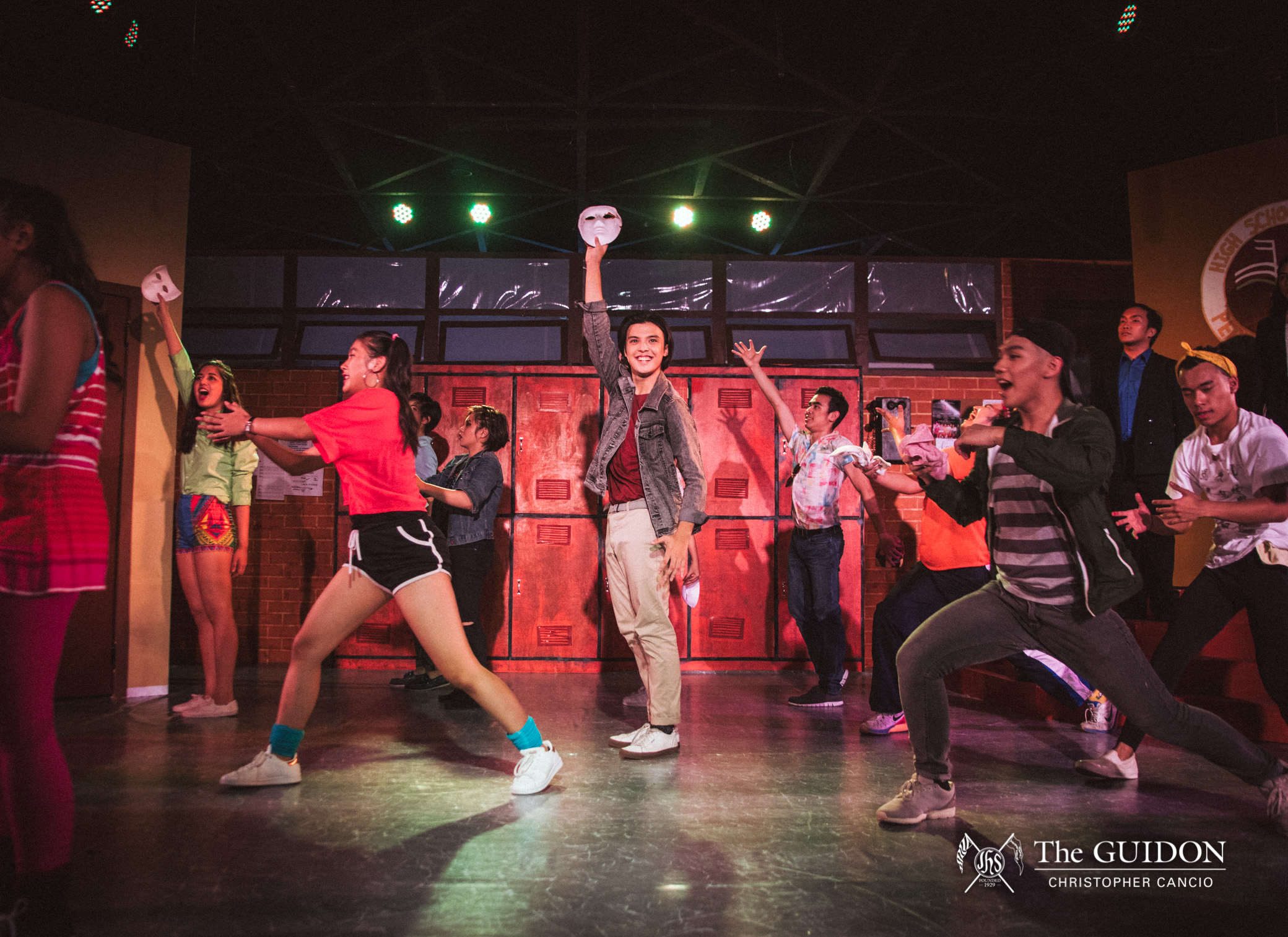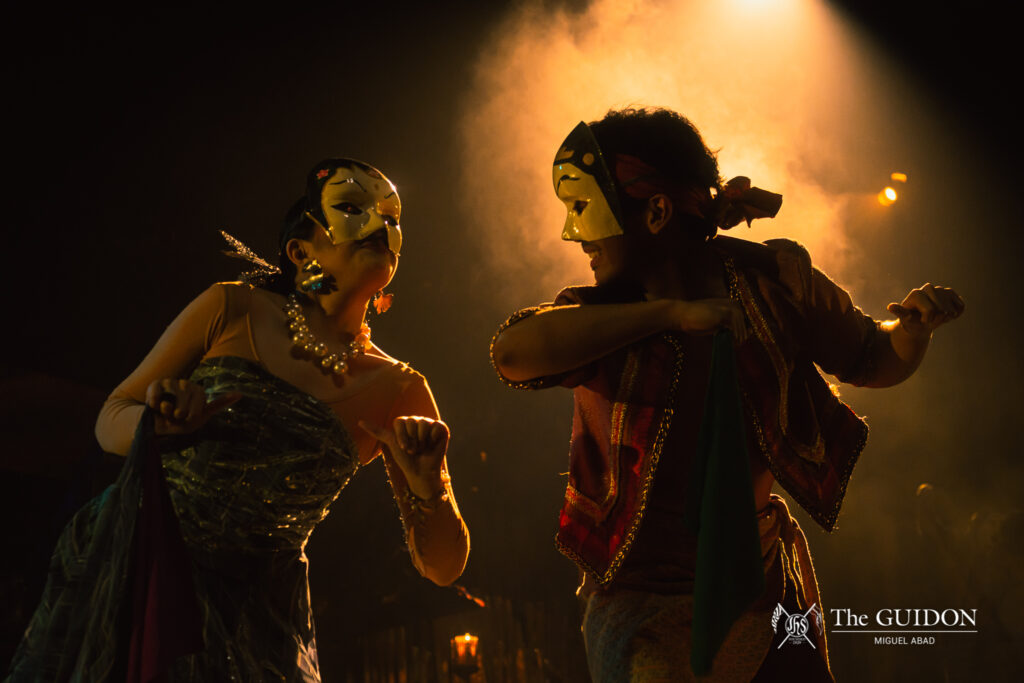A story about young dreamers and typical teenage problems, Fame the Musical takes its audiences through a journey of the triumphs and failures of pursuing one’s passions. Honest, relatable, and at times, naughty—Fame speaks to anyone who yearns for success and a name in this world.
Based on the 2003 Laurence Olivier Award-nominated Broadway show, Fame is the second production of Ateneo Blue Repertory’s (blueREP) 26th season. It is BlueRep’s “newbie” production for this year (as it is prepared and performed by the new members of the organization).
Set in 1980s New York, Fame follows the lives of students in the prestigious High School of Performing Arts; among them, the ambitious Carmen Diaz (alternates Sofee Catignas and Kyra Soriano), the lovestruck Serena Katz (alternates Bianca Doria and Raya Barreiro), the determined Nick Piazza (alternates Migs Bonifacio and Peter Romero), the token comedian and resident bad-boy Joe Vegas (alternates Marco Gimmi and Carlo Verde), the dyslexic dancer Tyrone Jackson (alternates Lance Bahia and Kirk Reyes), the introverted violinist Schlomo Metzenbaum (alternates Peter Romero and Mio Bengzon), and the financially struggling ballerina Iris Kelly (alternates Marrion Castaneda and Issa Princesa).
The play begins with a dramatic production number, so make sure to choose a nice seat—you’re in for a treat.
Much of the play’s action takes place on a threefold stage, and is designed to look like a music room, a school hallway, and a dance studio. Teenage nostalgia hits you right away, with all the right remnants of high school: Double doors and rows of lockers, a coat of arms of the “High School of Performing Arts” (which interestingly served as a dual swivel door) emblazoned on the wall, the bright, school-spirit colors and grinning-yellow walls, and the characters’ casually retro costumes give the audience an idea that they should expect a night of bouncy, juvenile fun.
Extensions provided the audience with a peripheral view of the stage, which made the performance feel more intimate. With a commonplace, familiar set design, the play grabs the audience’s attention with its choreography, musicality, and acting.
Choreographers Evee Raypon and Marcel David did a fantastic job with the dance sequences, which were tight, fluid, and nothing less than a treat to watch. Matched by catchy musical numbers, these comprised the heart and soul of the production. Production numbers were loaded with energy, and the performers pulled them off with pure, heartfelt joie de vivre.
Each actor took the role to their own, and the chemistry between them made it all the more believable; this goes for both the leads and supporting characters.
The leads—Nick Piazza, Carmen Diaz, and Tyrone Jackson—were among the characters who stood out. The actors who played them internalized their characters’ strong personalities well. Schlomo and his band adapted the dynamic of a real barkada, while the school teachers Ms. Sherman (alternates Kai Banson and Sandy Gana), Ms. Bell (alternates Kim Donato and Sandy Gana), and Mr. Myers (alternates Keano Penado and Xander Blanco) delivered a convincing performance as the archetypal parent figures.
Joe Vegas, on the other hand, was really funny, but after a while, his feeling-pogi-type of humor got old. The actors draw you into the characters’ world (almost High School Musical-esque, if it were set in the 80s and tackled real-life problems).
Needless to say, watching the play was like peeking into the secret lives of a bunch of quirky, high-spirited teens. Joe’s hilariously suggestive performance in “Can’t Keep It Down,” and the title track “There She Goes/ Fame” where Carmen took center stage were among the more memorable scenes in the play. The actors’ singing was admittedly not flawless, but their commitment to the performance ensured a good delivery nonetheless. It also came as a pleasant surprise that the character Goody King (JC Sta. Maria) could really play the saxophone.
Fame had its fair share of cheeky, light-hearted scenes and instances of kilig, particularly with Nick and Serena’s “Let’s Play a Love Scene” and Schlomo’s love story with Carmen, but extended dialogue scenes just became moments of waiting in anticipation for the next high-energy production number.
There were times when the show dragged and dawdled, particularly the part right before “The Teachers’ Argument,” as well as in some dialogue scenes towards the end. The ending felt a bit clipped, given the abrupt transition from the play’s emotional climax to the cast’s final song.
In terms of plot, the play more or less followed the original musical’s story, but with a twist. Director Missy Maramara, who had also directed blueREP’s Real Life Fairytales, is known for putting twists to familiar stories.
The original Fame the Musical tackled issues of drug abuse. In blueREP’s rendition, Maramara contextualized the play by integrating critiques on the current administration’s drug war, which, although commendable, felt somewhat forced and hastily added right before the cast sings “Bring on Tomorrow.”
Ultimately, blueREP’s Fame wanted “to make magic” on stage. The performers “electrified the place” with fun, well-executed song and dance numbers, but beyond that, Fame doesn’t leave a lasting and sound impression with the audience. Its infectious energy and likeable characters are not enough to grab at you. The play’s pace followed a predictable routine throughout—song and dance numbers followed by one-liners and rather uneventful scenes in between. Like any play with multiple narratives, the problem with Fame was that some stories ended up being watered down, rushed through, or not given enough attention as others. The more impactful moments, especially what happens after Carmen’s “In L.A.,” didn’t have as much room to breathe.
Furthermore, Fame introduced potentially good issues, but only tackled them on the surface. Overall, the play became a potpourri of pubescent antics and rather serious undertones forcefully rolled into a whimsical musical. Much like its characters, Fame brims with promise, especially given it being a newbie production.
Fame leaves the audience with these questions: Does the pursuit of fame lead to ruin? Does friendship outweigh success? Is there a place for dreamers in the real world? As in the song “Bring On Tomorrow,” Fame can only answer with an idealist’s mindset.
Towards the end, the show definitely invited audiences to dare to dream. Fame promises a night of fun, but whether or not people “really give a damn” is something only the audience can decide.
Rating: 3.5/5






